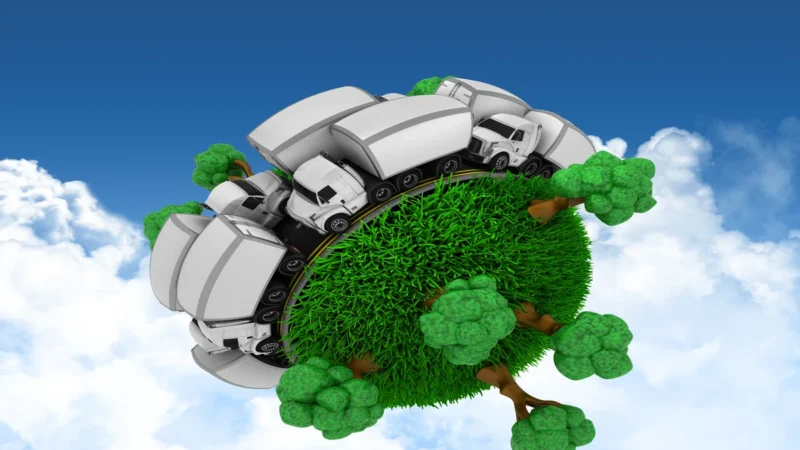Environmental Consequences of the Green Revolution

The Green Revolution, a period of significant agricultural advancement in the mid-20th century, brought about unprecedented increases in food production. However, this revolution also had unintended environmental consequences. This article explores the environmental impacts of the Green Revolution, highlighting issues such as intensive farming, pesticide and fertilizer use, water depletion, soil degradation, biodiversity loss, and their contribution to climate change.
I. Intensive Farming Practices:
Intensive farming methods, a hallmark of the Green Revolution, involved the use of high-yield crop varieties, mechanization, and increased reliance on agrochemical inputs. While these practices increased crop yields, they also led to various environmental challenges. The excessive use of machinery and irrigation systems increased energy consumption and carbon emissions. Additionally, the concentration of crop varieties reduced genetic diversity and increased vulnerability to pests and diseases, necessitating the use of more agrochemicals.
II. Pesticides and Fertilizers:
The Green Revolution heavily relied on synthetic pesticides and fertilizers to control pests and enhance crop productivity. Excessive and improper use of these agrochemicals has resulted in several environmental problems. Pesticides can contaminate soil, water bodies, and air, harming non-target organisms and pollinators. Fertilizers contribute to nutrient runoff, causing water pollution and eutrophication in aquatic ecosystems. Moreover, the persistence of these chemicals can lead to long-term ecological consequences, disrupting natural food chains and affecting biodiversity.
III. Water Depletion:
The Green Revolution necessitated increased irrigation to support high-yield crop varieties. The unsustainable extraction of water from rivers, lakes, and underground sources for irrigation has resulted in water scarcity and depletion of aquifers. Overuse of water resources has led to the drying up of rivers, reduced groundwater levels, and salinization of soil. This water stress not only affects agriculture but also impacts ecosystems, aquatic habitats, and the availability of safe drinking water for human populations.
IV. Soil Degradation:
Intensive farming practices have contributed to soil degradation, jeopardizing long-term agricultural productivity and environmental health. Heavy mechanization and excessive use of machinery compact the soil, reducing its ability to hold water and support healthy root growth. Additionally, continuous monocropping and inadequate nutrient management practices have led to soil erosion, loss of organic matter, and nutrient depletion. These issues degrade soil fertility, disrupt nutrient cycles, and increase the vulnerability of farmlands to erosion and desertification.
V. Biodiversity Loss and Climate Change:
The Green Revolution’s focus on high-yield crop varieties resulted in the replacement of traditional crop varieties and the loss of agricultural biodiversity. This reduction in genetic diversity reduces resilience to pests, diseases, and changing environmental conditions. Moreover, habitat destruction due to land conversion for agriculture further contributes to biodiversity loss. The increased use of agrochemicals and deforestation for expanding agricultural land also contribute to greenhouse gas emissions, exacerbating climate change.
Key Takeaways:
While the Green Revolution brought significant gains in food production, it also had unintended environmental consequences. The intensive farming practices, reliance on agrochemicals, water depletion, soil degradation, and biodiversity loss associated with this revolution highlight the need for sustainable and environmentally friendly approaches to agriculture. Balancing productivity with ecological considerations is crucial for ensuring a resilient and sustainable food system for future generations.
FAQs about Green Revolution
Q: What is the Green Revolution?
A: The Green Revolution refers to a period of agricultural advancements in the mid-20th century that aimed to increase food production through the adoption of high-yield crop varieties, intensive farming practices, and the use of agrochemicals.
Q: What were the environmental consequences of the Green Revolution?
A: The Green Revolution had unintended environmental consequences such as intensive farming practices leading to energy consumption and carbon emissions. Excessive use of pesticides and fertilizers caused pollution and biodiversity loss. Increased irrigation for high-yield crops led to water depletion, and soil degradation occurred due to mechanization and inadequate nutrient management.
Q: How did pesticides and fertilizers impact the environment?
A: Synthetic pesticides and fertilizers used during the Green Revolution caused contamination of soil, water, and air. Non-target organisms and pollinators were harmed, and nutrient runoff from fertilizers contributed to water pollution and eutrophication in aquatic ecosystems.
Q: What is water depletion, and how did it result from the Green Revolution?
A: Water depletion refers to the unsustainable extraction of water resources. The Green Revolution’s reliance on irrigation for high-yield crops led to overuse of water, depletion of aquifers, reduced groundwater levels, and salinization of soil. This has resulted in water scarcity, drying up of rivers, and environmental impacts on aquatic habitats.
Q: How did the Green Revolution contribute to soil degradation?
A: Intensive farming practices, including heavy mechanization and continuous monocropping, compacted the soil and caused erosion. Inadequate nutrient management led to nutrient depletion and loss of organic matter. These factors degraded soil fertility and made farmlands more vulnerable to erosion and desertification.


